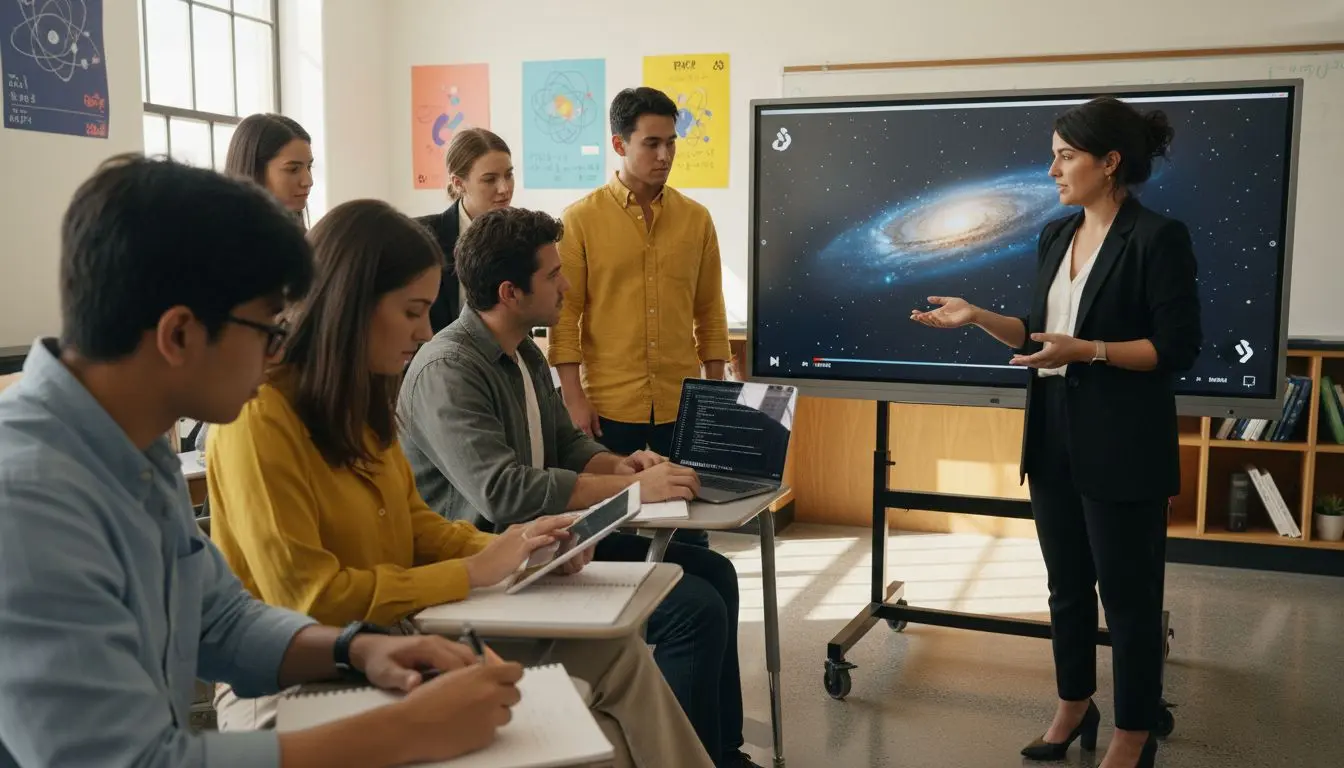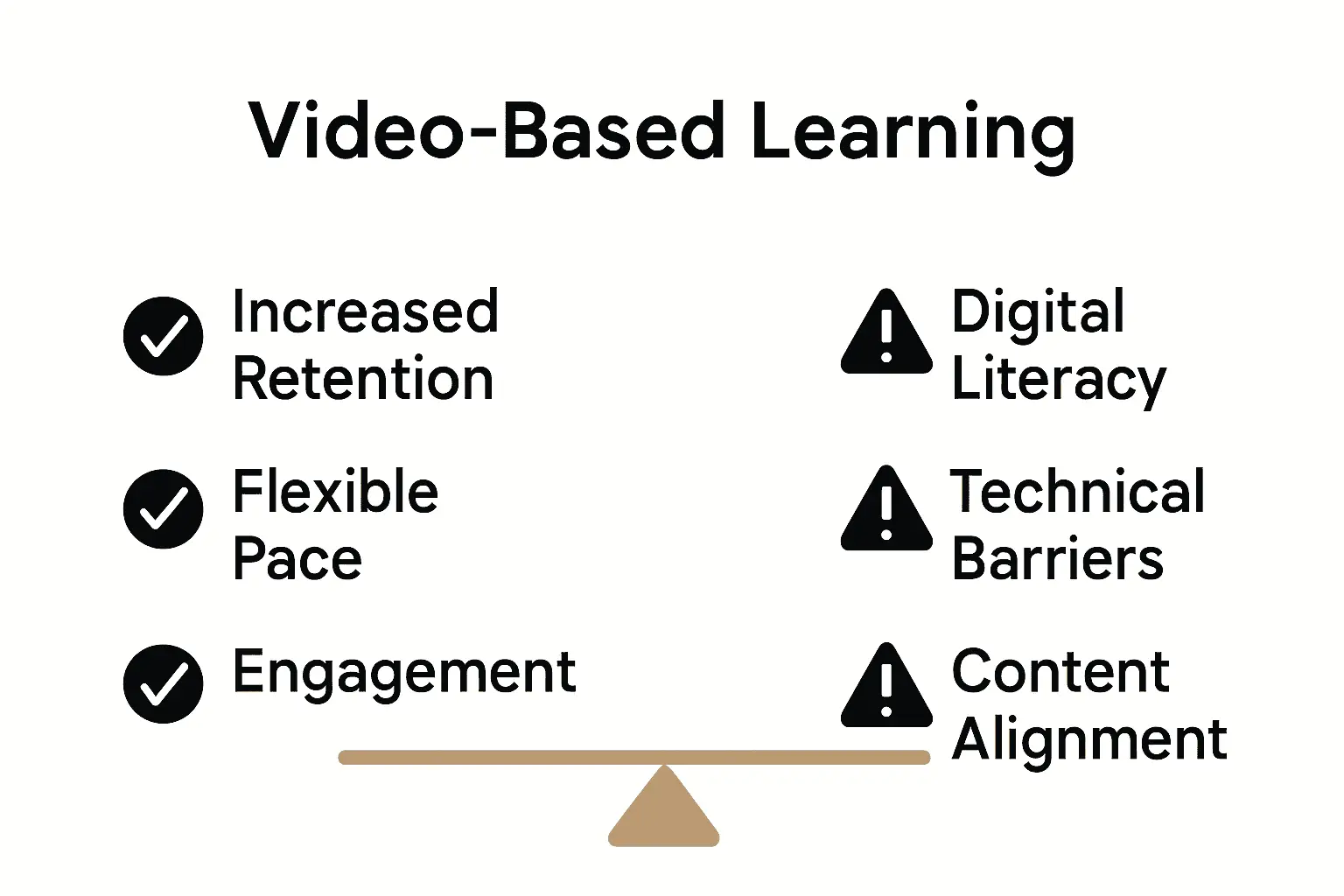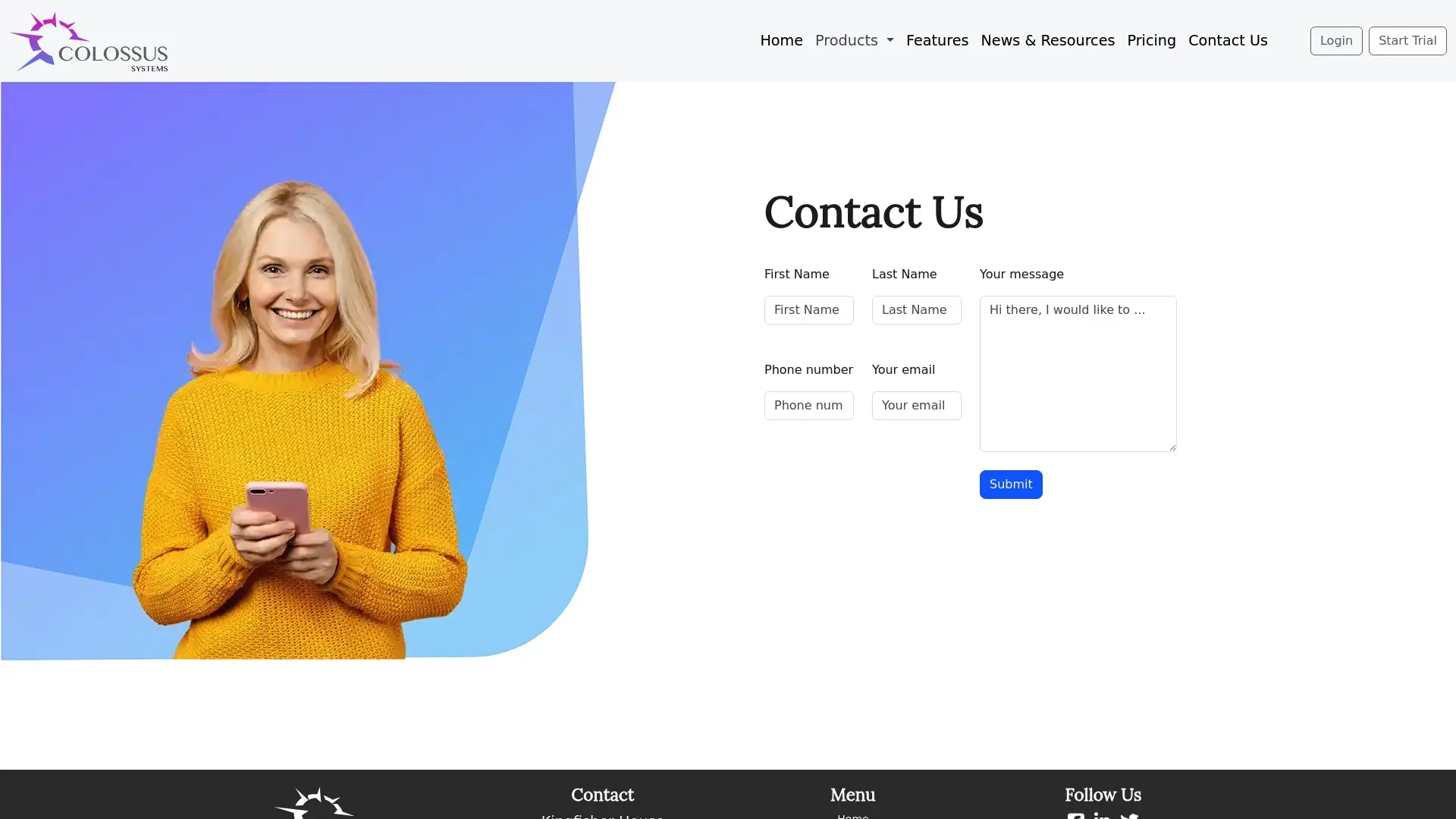Complete Guide to Using Video in Education

Over 90 percent of teachers now incorporate video in the classroom, changing how information reaches students in real time. As learning environments evolve, videos have become more than just a supplement. They shape student engagement, support different learning styles, and bring abstract concepts to life. This article offers clear guidance on the thoughtful use of educational video, highlighting key benefits, effective formats, and the challenges that educators should consider when integrating video into teaching and learning.
Table of Contents
- Defining Video Use In Educational Settings
- Types Of Educational Videos And Formats
- Benefits And Challenges Of Video-Based Learning
- Integrating Video Within Membership Platforms
- Privacy, Copyright, And Accessibility Considerations
Key Takeaways
| Point | Details |
|---|---|
| Video Enhances Learning Engagement | Video integration in education fosters connection, enhances engagement, and facilitates multimodal learning tailored to diverse styles. |
| Strategic Video Use is Essential | Selecting videos that align with educational goals is crucial for maximizing learning outcomes and effectiveness. |
| Focus on Interactive Experiences | Educators should design videos that encourage interaction and critical thinking, transforming passive viewing into active learning. |
| Address Legal and Accessibility Issues | Ensuring copyright compliance, data protection, and accessibility standards is vital for responsible video content management in education. |
Defining Video Use in Educational Settings
Video has transformed educational experiences, offering dynamic and engaging learning opportunities across diverse settings. According to research from University of Edinburgh Blogs, video content adds a crucial human element to learning environments, helping students feel more connected and less isolated.
In educational contexts, video integration serves multiple critical purposes beyond traditional instruction. As insights from ASCD reveal, strategic video use can provide quick informational bursts while maintaining precise learning objectives. Videos offer unique advantages that traditional text-based learning cannot replicate:
- Immediate visual context
- Enhanced engagement
- Multimodal learning experience
- Accessibility for different learning styles
Successful video implementation requires thoughtful selection and alignment with educational goals. Educators must consider factors like content relevance, vocabulary complexity, and learner comprehension levels. Effective video resources should not merely entertain but actively contribute to knowledge acquisition, spark curiosity, and encourage critical thinking. By transforming passive viewing into an interactive learning experience, videos can become powerful pedagogical tools that bridge knowledge gaps and inspire deeper understanding.

Ultimately, video in education is not about replacing traditional teaching methods but complementing them. When used strategically, videos can break complex concepts into digestible segments, provide real-world context, and create immersive learning environments that resonate with modern students across various academic disciplines.
Types of Educational Videos and Formats
Educational videos have evolved far beyond traditional lecture recordings, offering diverse formats that cater to different learning styles and objectives. According to Wikipedia, video lessons can range from direct teacher lectures to sophisticated animated presentations, with particular prominence in flipped teaching methodologies where students consume content independently before classroom interaction.
The primary categories of educational video formats include:
- Lecture Recordings: Direct captures of classroom or conference presentations
- Animated Explanatory Videos: Complex concepts illustrated through graphics and animation
- Demonstration Videos: Step-by-step practical skill tutorials
- Interview and Expert Discussion Videos: Insights from subject matter professionals
- Documentary-Style Educational Content: Narrative-driven learning experiences
Interestingly, Wikipedia highlights the emerging trend of video essays, which blend scholarly analysis with multimedia presentation. These formats allow educators to incorporate direct digital media quotations, creating rich, contextualised learning experiences that transcend traditional text-based instruction.
Effective educational videos prioritise clarity, engagement, and precise learning objectives. They should be concise, visually compelling, and structured to maintain learner attention. By leveraging different video formats, educators can create dynamic, accessible learning materials that accommodate varied cognitive preferences and enhance overall educational comprehension.
Benefits and Challenges of Video-Based Learning
Video-based learning has emerged as a powerful educational approach, offering unique advantages and presenting distinct challenges for modern educators. According to research from the Springer Learning Environment Journal, students consistently perceive video content as both useful and engaging, highlighting its potential to transform traditional learning experiences.
The key benefits of video-based learning include:
- Enhanced information retention
- Increased student engagement
- Flexibility of learning pace
- Visual and auditory learning support
- Accessibility for diverse learning styles
- Ability to pause, replay, and review content
However, Edmentum emphasises that the effectiveness of video learning depends critically on purposeful implementation rather than simply introducing video content. Challenges such as digital literacy, potential technical barriers, and the need for carefully aligned learning objectives can potentially diminish the medium’s educational impact.
To maximise video-based learning effectiveness, educators must strategically design content that is concise, visually compelling, and directly connected to specific learning outcomes.
 This approach transforms videos from passive viewing experiences into interactive, meaningful educational tools that actively support student comprehension and skill development. Online Learning Engagement: Practical Strategies for Organisations provides additional insights into creating compelling digital learning experiences that keep learners motivated and involved.
This approach transforms videos from passive viewing experiences into interactive, meaningful educational tools that actively support student comprehension and skill development. Online Learning Engagement: Practical Strategies for Organisations provides additional insights into creating compelling digital learning experiences that keep learners motivated and involved.
Integrating Video Within Membership Platforms
Successful video integration in membership platforms requires a strategic approach that goes beyond simple content placement. According to research from the Teachers Institute, effective video implementation hinges on curriculum relevance, interactivity, and sustained member engagement.
Key strategies for seamless video integration include:
- Aligning video content with specific learning objectives
- Creating interactive viewing experiences
- Developing measurable engagement metrics
- Personalising video recommendations
- Enabling member feedback and discussion features
- Implementing adaptive learning pathways
Interestingly, research from ArXiv highlights innovative visualisation tools that help learners identify and focus on critical video segments, potentially transforming passive viewing into active learning experiences. These technological advancements demonstrate how membership platforms can leverage video content to create more dynamic, personalised educational environments.
To maximise video integration effectiveness, platforms must focus on Integrating Your Website into a Membership CRM to Enhance Engagement, ensuring that video content is not just an add-on but a core component of the learning experience. By thoughtfully designing video workflows that connect with broader membership objectives, organisations can create compelling, interactive educational ecosystems that drive member satisfaction and retention.
Privacy, Copyright, and Accessibility Considerations
Navigating the complex landscape of digital educational content requires careful attention to privacy, copyright, and accessibility standards. According to insights from Wikipedia, educational content creation increasingly involves addressing critical issues surrounding intellectual property and legal usage of digital resources.
Key considerations for responsible video content management include:
- Obtaining proper licensing for educational materials
- Protecting student and instructor personal information
- Ensuring copyright compliance
- Implementing robust data protection mechanisms
- Creating accessible content for diverse learner needs
- Developing clear usage and attribution guidelines
Research from the ERIC Institute emphasises the critical importance of digital and media literacy, highlighting that instructors must create flexible learning environments that respect individual privacy while promoting educational engagement. This requires a nuanced approach to content creation and distribution that balances technological innovation with ethical considerations.
To address these complex challenges effectively, membership platforms must develop comprehensive policies that Integrate Your Website into a Membership CRM to Enhance Engagement, ensuring that video content remains both legally compliant and pedagogically valuable. By proactively managing privacy, copyright, and accessibility, organisations can create trustworthy, inclusive educational experiences that protect both content creators and learners.
Unlock the Full Potential of Video in Your Membership Platform
Integrating video effectively is essential to overcoming common challenges like low member engagement and content relevance outlined in the article “Complete Guide to Using Video in Education”. When videos are thoughtfully aligned with clear learning objectives and personalised experiences, they transform passive content into dynamic interaction points. However, managing these moving parts alongside membership growth, event planning, and communication can feel overwhelming without the right system.
Colossus Systems specialises in exactly this challenge by offering a comprehensive SaaS platform designed for organisations that want to streamline their member management, virtual training, and digital engagement all in one place. With powerful tools that allow you to create interactive, accessible video experiences while tracking engagement and personalising member journeys you can address the pain points of video implementation highlighted in the guide. Our platform also ensures your content complies with privacy and copyright considerations, supporting a secure and inclusive learning environment.

Ready to turn your video education strategy into a membership growth engine Start today by exploring how Colossus Systems can simplify your course delivery, event registration, and member communication. Connect with us now at Contact Colossus Systems to discover a tailored solution that elevates your educational offerings and member satisfaction.
Frequently Asked Questions
What are the main benefits of using video in education?
Video enhances information retention, increases student engagement, provides flexibility in learning pace, and supports diverse learning styles through visual and auditory aids.
How can educators effectively integrate video in their teaching?
Educators should align video content with specific learning objectives, create interactive viewing experiences, and ensure that videos are concise and visually compelling to maintain learner attention.
What types of educational videos are most effective?
Effective educational videos include lecture recordings, animated explanatory videos, demonstration videos, expert discussions, and documentary-style content, each serving different educational needs and learning styles.
What challenges do educators face when implementing video-based learning?
Challenges include digital literacy, technical barriers, ensuring content aligns with learning objectives, and the need for purposeful integration of video rather than simply adding it to the curriculum.